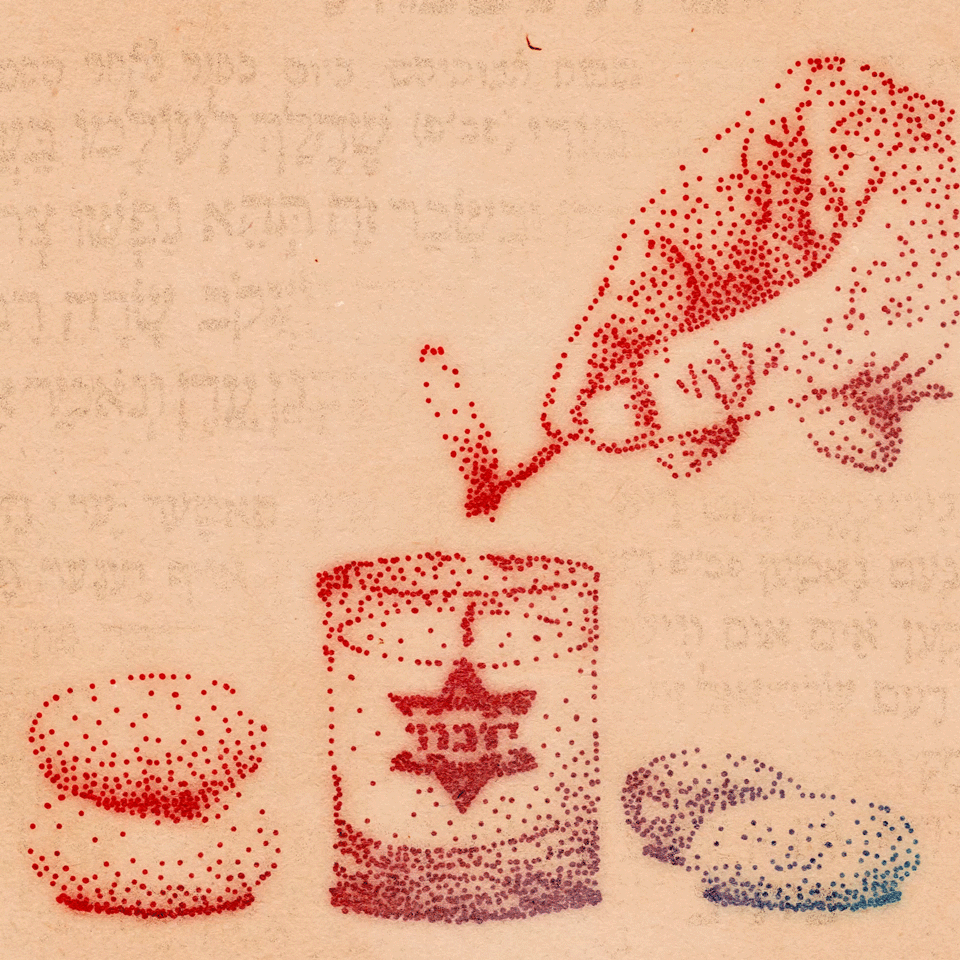Tablet has published dozens of stories about #death—both about Jewish rituals, and about mourners’ personal experiences.
You’ll find essays by people who have lost a child, a sibling, a grandparent, or a mother or father, as well as those who have endured the pain of a miscarriage or a stillbirth. And articles about what, exactly, happens in Judaism after someone dies. We’ve covered what the chevra kadisha, or burial society, does, and the guidelines Judaism offers for honoring the body in death. Some contributors have written about their experiences practicing #tahara (preparing the dead for burial)—and how those rituals can be adjusted for transgender Jews; others have written about sitting shmira (guarding the body before burial)—including one rabbi who found unexpected comfort singing during shmira.
Jewish burial comes with its own set of considerations, from shrouds to headstones. And contrary to what you may have heard, some Jews still spend time debating traditional burial in a cemetery (and whether to visit), versus the option of cremation.
Rituals aren’t only for the dead; they’re also for the survivors. Mourners traditionally sit #shiva for a week after the funeral. Many people find solace here, being surrounded by loved ones at home. Since the COVID-19 pandemic, some have had to adjust to sitting shiva alone, or virtually; others have found more unusual ways of observing the tradition in ways that are meaningful (and even entertaining) to them.
For 11 months, mourners say a daily prayer called the #Kaddish. This requires finding a minyan—a quorum of 10 people—to pray with. It’s not always easy to find a comfortable place: Women, in particular, have written stories about searching for a minyan, sometimes without success, where they can say Kaddish; other women (including Mayim Bialik) have found a place where they feel at home. Some people have found virtual minyans; these became a necessity during the pandemic but some mourners find Zoom minyans useful even now. Several Tablet writers have found less traditional ways of observing this ritual—whether it’s with a partner, or entirely outside the synagogue and far from a minyan. Others have wondered how to mourn someone who wasn’t technically related, or someone who dealt with addiction issues, or a beloved pet. Even when the 11 months of Kaddish are over, there are still more rituals to come.
Every year on the anniversary of the death, Jews mark that anniversary—known as #yahrzeit—by lighting a candle that burns for a full day, or illuminating a memorial plaque in a synagogue (or elsewhere). Our writers have wrestled with yahrzeit for various reasons: What should you do if your mother was suicidal, or if the person you lost wasn’t Jewish? And then, once again, the COVID-19 pandemic complicated observance in unexpected ways.
Beyond individual mourning rites, Jews also have collective traditions: Four times each year—during Passover, Shavuot, Yom Kippur, and Shemini Atzeret—synagogues hold a special memorial #Yizkor service for those who have ever been in mourning. For some people, these occasions raise specific questions, such as whether to include your children in the service, or whether to mourn for an abusive parent.
Prescribed rituals aren’t the only way we remember the loved ones we’ve lost. Oftentimes, we’ve been left with something tangible, whether it’s a large cash inheritance we’re not sure we even want, or something as seemingly insignificant as an old pair of shoes. We are also left with personal stories to share, which can be an important part of talking to kids about death. For a lot of us, our memories are tied up in food, and our way of remembering someone is to make a favorite recipe—from your father’s hummus to your grandmother’s rugelach—and pass that recipe down to the next generation, with a story about the person who created it.
Dive into the Tablet archives and see how other people are dealing with death and mourning in ways that are both traditional and entirely unexpected.
From the editors of Tablet Magazine.

